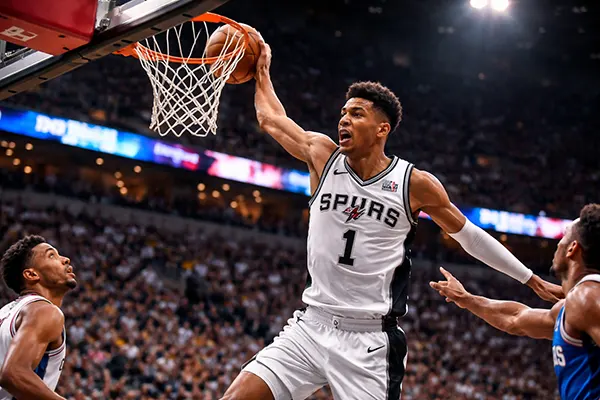Football in 2025 has once again proven that the transfer market is not only about talent, but also about financial power, strategic vision, and long-term planning. Several record-breaking moves have redefined the boundaries of modern football, highlighting how clubs adapt to the ever-growing commercial and sporting demands of the game.
Global Transfer Records of 2025
The year 2025 has already seen clubs spending unprecedented amounts to secure the services of world-class players. European giants such as Real Madrid, Manchester City, and Paris Saint-Germain continue to lead the market with aggressive recruitment strategies. Each transfer is not just a sporting investment, but also a commercial one, with shirt sales, sponsorship deals, and global brand expansion playing major roles.
Real Madrid, for instance, broke their own transfer record by signing Kylian Mbappé’s successor, Endrick, from Palmeiras for a fee that surpassed €200 million. This move solidified Madrid’s long-term strategy to dominate both in Spain and Europe with young, marketable talent. Manchester City followed suit with a €180 million deal for Barcelona’s midfield prodigy Pedri, ensuring their dominance in the Premier League remains intact.
Another notable transaction was Bayern Munich’s capture of Jamal Musiala’s new midfield partner from the Premier League, strengthening their squad after a transitional period. This highlighted the Bundesliga’s effort to remain competitive in European football while maintaining financial responsibility.
The Rise of Saudi Arabian Clubs
Saudi Arabian clubs have once again been central to breaking transfer records in 2025. After their massive impact in 2023 and 2024, the Saudi Pro League has continued to lure world-class players with record-breaking salaries and transfer fees. Al Hilal and Al Nassr in particular have spent more than €500 million combined this year, bringing in stars from Europe who seek both financial rewards and new sporting challenges.
These moves have sparked debates within UEFA and FIFA about the balance of global football competition. Critics argue that the financial gap is distorting the sport, while supporters believe it opens doors for new markets and more globalised football.
The impact of Saudi clubs is undeniable: their financial strength forces European giants to adjust recruitment strategies, while also creating opportunities for lesser-known players to shine in Europe as replacements for departing stars.
Young Talents Breaking Records
One of the most notable aspects of 2025 transfers has been the enormous fees paid for players under 21. Football has entered an era where investing in youth is not just about potential but also about brand value. Clubs view emerging stars as both future leaders on the pitch and long-term marketing assets.
Barcelona’s transfer of 18-year-old Brazilian winger Estevão for over €120 million shocked the market, underlining the Catalan club’s determination to rebuild after financial struggles. Chelsea also joined the race by paying €110 million for an English wonderkid from the Championship, demonstrating their continued reliance on youth recruitment despite mixed past results.
Such investments reflect how clubs are adapting to new Financial Fair Play regulations, where spreading costs across long-term contracts allows them to remain competitive while technically adhering to UEFA’s financial guidelines.
Impact on Player Development
The record sums for young talents raise questions about player development and pressure. With expectations higher than ever, clubs invest heavily in sports psychology, medical teams, and advanced analytics to protect their investments. The risk of overburdening players both mentally and physically has never been greater.
However, the benefits of these transfers cannot be ignored. Young players now have access to world-class training environments, elite managers, and international exposure, accelerating their growth. The focus on youth also ensures that clubs can compete not just in the present, but also build dynasties for the future.
For national teams, these record transfers can be both a blessing and a curse. While they improve the quality of players, they also risk prioritising commercial pressure over sporting stability.

Future Outlook of the Transfer Market
Looking forward, analysts predict that 2025 may only be the beginning of a new financial cycle in football. With the continued involvement of state-backed clubs, increasing television revenues, and expanding fan bases in Asia and North America, the market will continue to grow despite concerns about sustainability.
The introduction of stricter financial rules by UEFA and FIFA may provide some balance, but history has shown that clubs often find creative ways to adapt. Whether through long contracts, shared ownership models, or new sponsorship deals, football finances remain as dynamic as the sport itself.
Fans, meanwhile, are becoming increasingly critical of the soaring fees, questioning whether such sums benefit the game or merely inflate expectations. Transparency, accountability, and long-term planning will be essential if clubs are to maintain trust in the global football community.
What Lies Ahead
The 2025 transfer season has already redefined the market, but the coming years could push boundaries even further. As technology integrates into scouting and performance analysis, we can expect even younger players to be identified earlier and sold for record fees.
At the same time, geopolitical and economic factors will continue to shape the balance of power in world football. Whether Europe can maintain dominance or whether emerging leagues will rise remains one of the biggest questions of the next decade.
Ultimately, transfer records are more than just numbers. They reflect the evolution of football as both a sport and a business, shaping not only who wins trophies but also how the game itself is experienced by millions of fans worldwide.




